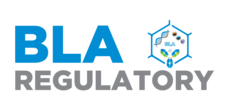Layer 7-T Brain–Computer Interface Wins FDA Clearance for Clinical Use
August 13, 2025
Brain–computer interfaces (BCIs) are no longer just the stuff of cutting-edge research labs. With the U.S. Food and Drug Administration’s (FDA) recent 510(k) clearance of Precision Neuroscience’s Layer 7-T Cortical Interface, clinicians now have access to a high-resolution, minimally invasive brain interface that can be deployed today. This plug-and-play device delivers an unprecedented 1,024 electrodes through a micro-slit smaller than 1 mm—a feat that redefines what’s possible in both neurosurgical and research environments.
Cleared on March 30, 2025, under submission number K242618, Layer 7-T marks a pivotal shift in the brain-tech landscape. It delivers unmatched electrode density, ease of use, and clinical compatibility—bringing next-gen neuroscience out of the lab and into the operating room (OR).
Why Layer 7-T Matters
- Clinically deployable: Already been used in 37 U.S. patients
- FDA-cleared: 510(k) pathway ensures faster access without Premarket Approval (PMA) delays
- Hospital-ready: Compatible with standard electroencephalography (EEG) head stages
- High performance: 8x the resolution of typical subdural grids
- Minimally invasive: Delivered through cranial micro-slit technique
Next-Gen Design: Dense, Flexible, and Minimally Invasive
At the heart of the Layer 7-T is a 1,024-electrode array built from polyimide—a biocompatible, ultra-thin, and flexible material. The electrode contacts range from 50 to 500 microns with 400 µm spacing, providing sub-millimeter resolution that far exceeds traditional grids (typically ~4.5 mm contacts spaced 10 mm apart).
The flexible array conforms seamlessly to the brain’s surface, is engineered to be reversible, causing no damage to the brain. Even more impressive: the entire device can be deployed through cranial micro-slit (smaller than 1 mm) technique using a custom surgical delivery system, replacing large craniotomies with a far less invasive alternative.
“This device fuses surgical simplicity with neuroscientific power—it’s plug-and-play BCI for the clinical world.”
Regulatory Strategy: Smart Path to Fast Approval
Precision Neuroscience opted for the FDA’s 510(k) premarket notification process, establishing substantial equivalence to Ad-Tech’s subdural electrode system (K191186). The Layer 7-T shares the same temporary indication (up to 30 days), usage environment, and safety profile.
Key factors supporting this equivalence included:
- Identical indications for use (temporary cortical recording and stimulation)
- Comparable implantation duration (≤30 days)
- Acceptable variations in surgical approach (micro-slit technique or craniotomy)
Supporting Data Highlights:
- International Organization for Standardization (ISO) 10993 biocompatibility testing
- International Electrotechnical Commission (IEC) 60601 electrical safety analysis
- Good Laboratory Practice (GLP)-compliant animal studies
- Impedance and signal-to-noise ratio (SNR) validation
- Mechanical durability assessments
Despite its higher resolution and innovative form factor, the FDA determined that Layer 7-T posed no additional risk. This fast-track strategy brought breakthrough capability to clinicians years faster than a PMA route would allow.
Clinical Applications: Versatile and Ready for Use
The Layer 7-T is indicated for temporary use up to 30 days and supports a wide range of applications:
- Epilepsy Surgery: High-resolution surgical mapping of speech and motor areas
- Tumor Resection: Preserving function with targeted intraoperative monitoring
- BCI Trials: Real-time decoding of movement, speech, or intention
- Neuromodulation Studies: Exploring stimulation for neuropsychiatric therapies
Its compatibility with Deutsches Institut für Normung (DIN)-standard EEG head stages means hospitals can integrate it with existing infrastructure—no proprietary amplifiers, no locked ecosystems.
Comparing the Field: How Layer 7-T Stacks Up
|
Company |
Device Name |
FDA Status |
Implant Type |
Electrode Count |
Electrode Size / Spacing |
Material |
Surgical Method |
Use Duration |
Primary Use |
|
Precision Neuroscience |
Layer 7-T |
510(k) Cleared |
Subdural (Flexible) |
1,024 |
50–500 µm / 400 µm |
Polyimide |
<1 mm micro-slit technique |
≤30 days |
Mapping, BCI, Stimulation |
|
Ad-Tech Medical |
Subdural Electrode |
510(k) |
Subdural (Rigid) |
Up to 128 |
~4.5 mm / 10 mm |
Silicone |
Craniotomy |
≤30 days |
Intraoperative Electrocorticography (ECoG) |
|
Neuralink |
N1 Implant |
Investigational Device Exemption (IDE) |
Intracortical |
1,024+ |
~10 µm / ~50 µm |
Polyimide/Custom |
Robotic Craniotomy |
Chronic |
Motor & Sensory Decoding |
|
Synchron |
Stentrode |
IDE + Breakthrough |
Endovascular |
~16 |
~750 µm / 1–2 mm |
Nitinol |
Jugular Vein to Cortex |
Chronic |
Communication (Thought-to-Text) |
|
NeuroPace |
RNS System |
PMA |
Implanted Stimulator |
8 |
Depth or Surface |
Silicone / Metal |
Craniotomy |
≥10 years |
Seizure Detection and Responsive Stim |
|
PMT Corporation |
Cortac Electrodes |
510(k) |
Subdural (Rigid) |
Up to 64 |
~4 mm / 10 mm |
Silicone |
Craniotomy |
≤30 days |
Intraoperative Cortical Mapping |
Strategic Positioning: Innovation Meets Accessibility
By leveraging 510(k) equivalence and focusing on temporary applications, Precision Neuroscience avoided the years-long path required for chronic implants. Their strategy enabled:
- 8x increase in electrode density
- Seamless compatibility with EEG systems
- Minimally invasive surgery with custom tools
- Real-world utility today, not 5 years from now
The Layer 7-T is not just a device—it’s a platform. Future upgrades may include wireless data transmission, closed-loop stimulation, or chronic versions, all built on this hospital-tested foundation.
Market Outlook: Right Product, Right Time
The global BCI market, valued at US $2.1–$2.4 billion in 2024, is forecast to grow to US $6.5–$12.4 billion by 2030–2034. The invasive BCI segment alone represents a total addressable market (TAM) of over US $160 billion.
Layer 7-T is uniquely positioned to serve:
- Clinicians: Tools for real-time monitoring and functional mapping
- Researchers: High-density cortical data without hardware lock-in
- Health systems: Compatible, cost-effective tech ready for ICU/OR use
- Investors: A short-term win with long-term platform potential
With over US $100 million in funding and a valuation approaching US $500 million, Precision Neuroscience is clearly resonating with both the clinical community and capital markets.
Conclusion: The Future of BCIs Has Arrived
The FDA clearance of the Layer 7-T Cortical Interface is more than a regulatory milestone—it’s a signal that advanced BCI technology is ready for mainstream clinical use. The device offers unmatched resolution, fast deployment, and wide-ranging applicability in a compact, minimally invasive format.
Layer 7-T empowers hospitals, accelerates research, and bridges the gap between science fiction and surgical reality. Precision Neuroscience has delivered a tool that doesn’t just push boundaries—it redefines them.
Sources
- FDA 510(k) Summary – K242618: Layer 7-T Cortical Interface.
- Precision Neuroscience Press Release (April 17, 2025) – GlobeNewswire.
- Fierce Biotech: “FDA clears Precision Neuroscience’s brain–computer interface implant”.
- MedTech Dive: “FDA clears Precision Neuroscience brain implant”.
- Practical Neurology: “FDA Clears BCI Device for Measurement and Stimulation of Cortical Activity”.
- FDA K191186: Ad-Tech Subdural Electrode Summary.
- Grand View Research – Brain–Computer Interface Market Size, Share & Trends Analysis Report, 2024–2030.
- Precedence Research – Brain–Computer Interface Market Size 2025–2034.
- Wall Street Journal –Inside the Operating Room: Doctors Test a Revolutionary Brain-Computer Implant, 2024.
- Neurocritical Care Currents Article (2024): Brain-Computer Interfaces in Neurocritical Care: The Layer 7 Cortical Interface.

